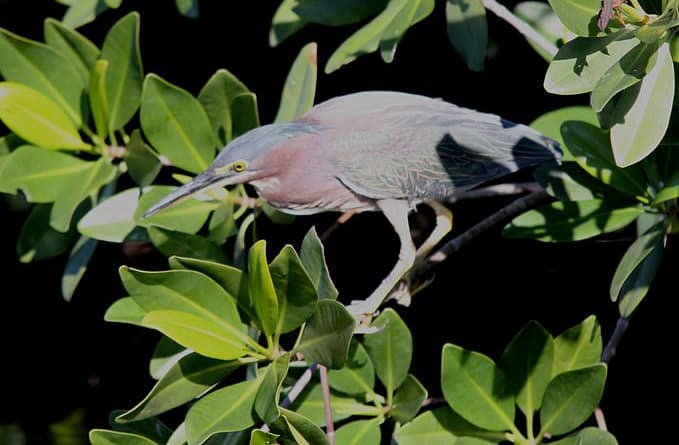Many non-birders call it a crane or a stork, but the heron can be instantly distinguished from these other large, long-legged birds by its folded-back neck in flight and the S-shaped curvature of its neck at rest. Adult great blue herons have a black stripe running from the eye to the back of the neck; immature birds have a blackish cap. Southern Florida is home to the great white heron, an all-white race of the great blue that can be distinguished from egrets by its large size and long, thick, orange bill and orange legs.
Listen for
A deep, croaking graaaak, usually given in flight, that sounds more like a belch than a bird’s call.
Find it
North America’s largest and most widespread heron is found, at one time or another, virtually wherever water and small aquatic creatures are found. Found across the United States, southern Canada, and up the Pacific coast to Alaska, the great blue heron ventures where few other herons dare.
Many eastern birds migrate to the South or to the tropics—as far south as northwestern South America—in winter. Outside of the Appalachians, great blue herons occur throughout the South all year.
Feed it
Great blue herons seek a variety of prey in a range of wet habitats. Fish are a mainstay. However, amphibians, reptiles, birds, small mammals, and invertebrates also feature on the menu. Feeding strategy varies as well. They may hunt alongside each other, wading slowly up to their bellies.
Alternatively, they may stand alone for long periods, waiting to thrust their bills at unsuspecting prey. Great blue herons sometimes stalk rodents in dry fields or haunt beaches and docks in search of live or discarded sea life.
Nesting Behavior
Great blue herons nest in large colonies, often in tall trees away from human disturbance. They will nest in the company of other water birds, often in areas with water beneath nesting trees, probably to thwart predators. Each year, great blue heron pairs form bonds through a series of posing displays, including stretching, preening, crest raising, circling in flight, and twig shaking.
Males provide sticks, which females place in the large platform nest. Females usually lay three to five eggs, which incubate for almost a month. Both parents feed the young, which take flight 2 to 21/2 months after hatching.





I love their growl! I saw one fishing one day for about an hour and then suddenly it let out the biggest angry honk!